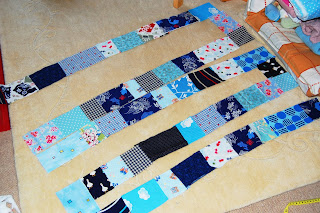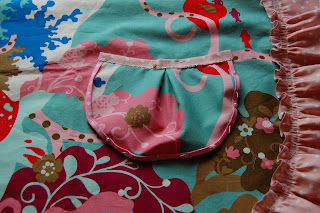It is a very daunting experience to be faced with thread tension problem. It almost sends a chill to my spine just thinking about it now.. *uuurrrrggghhh* However, it is better to be prepared and know what to expect when the time comes for a sewist to face the challenge of having thread tension problem on her machine.
I was so stressed out one afternoon to find the stitches uneven and the knot showing on the top of the fabric while the back looking normal that I could have cried. The
Janome Super Secio PC's manual being in Japanese and having no English manuals on the net didn't help to ease my stress. I put away my machine and took a break for a couple of hours away from the sewing room just to relax and calm down. I searched the net for some insight into the problem and came across
this site that explained thread tension in such flair and ease that I felt better just reading about it, cause now at least I know what is wrong and I felt more in control (if you haven't noticed it already, I'm a control freak...)
So, having survived the ordeal (drama..drama..drama) thought I'd share with you the enlightening paragraph about thread tension that I've found here.
Grasping a few basic concepts, one can understand how to adjust the tension on most any machine, regardless of brand and model.
Most domestic sewing machines are of the "lockstitch" variety. That means an upper thread and a lower thread "lock" together. If they don't lock together in the correct place, the tension is "off" and the seam lacks proper strength.
As the threads lock together, they form a knot. If this knot is in the correct place, it is never seen...it is hidden (locked) between the two layers that are being sewn together. When these knots are obvious on the bottom or the top sewing surface, it's time to adjust your tension.
Basic Concept: If you get a picture in your mind of the tension knob as a device to raise and lower these knots, it makes the adjustment much easier.
Steps1.Sew a test seam.
2.Observe the seam on the top and the bottom surface using a magnifying device if need be.
3.Find the position of the knots.
4.Tighten the tension and "pull the knots up" if the knots appear on the bottom side of the sewn seam.
5.Loosen the tension and "drop the knots down" if the knots are on the top surface.
6.Sew a test on the fabric you will be using. Tensions often have to be adjusted when changing fabric types and weights.
7.Continue adjusting the tension and inspecting the seam until your seam is balanced.
Tips
Most machines tensions are tightened by turning the tension knob clockwise (see your owner's manual for the location of this dial).
Conversely turning the tension knob counter-clockwise loosens the tension.
There are two tensions on most machines: The upper tension and the bobbin tension. Generally speaking, the bobbin tension never needs adjusting and the sewing person with just average skills can get into much trouble by changing this setting. It may end up with a trip to a professional repairman!
Credit to: http://www.wikihow.com/Adjust-the-Tension-on-a-Sewing-MachinePin It















.JPG)










.JPG)
.JPG)
.JPG)

.JPG)




















